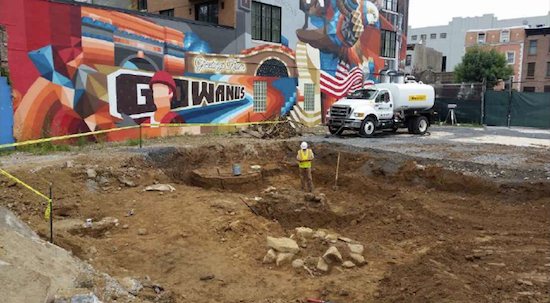State: No slave or soldier remains found at Gowanus lot
Sen. Hamilton casts doubt on validity of dig

After two archaeological digs at an empty lot in Gowanus, officials have concluded that the property on Ninth Street and Third Avenue does not contain the remains of 19th-century slaves or Revolutionary War soldiers. Photo courtesy of AKRF
Abandoned lots in Brooklyn are filled with many unique things, namely graffiti, rats and drug paraphernalia.
One vacant property in Gowanus, however, was thought to contain something a bit more noteworthy: the remains of 19th-century slaves and Revolutionary War soldiers.
But after the environmental, planning and engineering firm AKRF conducted two digs at the site, archaeologists concluded that the space at Ninth Street and Third Avenue did not contain anything of historic significance.
